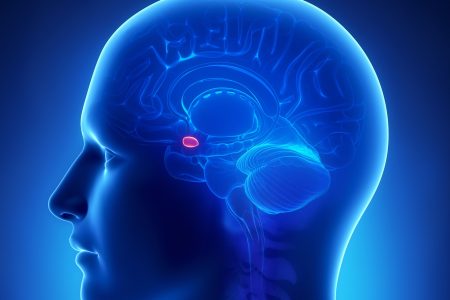Turning Down Brain’s Amygdala Can Modify Emotions - Dispatch Weekly
September 13, 2016 - Reading time: 3 minutes

A study published in Biological Psychiatry found that training the brain using auditory or visual signals could guide people to regulate their brain activity after traumatic stress.
Treating Stress-Related Disorders Often Expensive
Examining trauma and stress-related disorders requires investigation of the amygdala, the brain’s emotional center, which is deep in the brain and typically difficult to reach with normal neurofeedback methods.
Usually this is measured by magnetic resonance imaging (fMRI), which is costly and not always accessible.
A New Imaging Method
The study provided reliable neurofeedback on the level of amygdala activity using electroencephalograph, or EEG. This allowed people to control and alter their own emotional responses through self-regulation.
Senior author Dr. Talma Hendler of Tel-Aviv University in Israel and The Sagol Brain Center at Tel Aviv Sourasky Medical Center said:
“The major advancement of this new tool is the ability to use a low-cost and accessible imaging method such as EEG to depict deeply located brain activity.”
The researchers developed the imaging tool that uses EEG to measure changes in the amygdala activity, indicated by its ‘electrical fingerprint.’
The Study
42 participants were trained to reduce auditory feedback that linked to amygdala activity using mental strategies that were personally effective.
Each participant learned to adapt his or her own amygdala electrical activity leading to improved down regulation of blood-oxygen level. This was dependent of signals of the amygdala measured with fMRI.
Another experiment with 40 participants found that individuals who learnt to down regulate amygdala activity could improve behavioral emotion regulation, linked to mood.
With a new imaging tool, people could modify their neural processes and therefore change emotions.
Biofeedback, Meditation, Placebos
John Krystal, Editor of Biological Psychiatry said:
“We have long known that there might be ways to tune down the amygdala through biofeedback, meditation, or even the effects of placebos.”
“It is an exciting idea that perhaps direct feedback on the level of activity of the amygdala can be used to help people gain control of their emotional responses.”
Accessible Home Treatment for Trauma Patients
The approach “holds the promise of reaching anyone anywhere,” said Hendler and Keynan.
The mobility and low cost of EEG may make it possible for home-stationed bedside treatments for recent trauma patients or for stress resilience training for people prone to trauma.
This has wide implication for sufferers of trauma: accidents, injuries, violent attacks, battling long-term illness or veterans of war.

DW Staff
David Lintott is the Editor-in-Chief, leading our team of talented freelance journalists. He specializes in covering culture, sport, and society. Originally from the decaying seaside town of Eastbourne, he attributes his insightful world-weariness to his roots in this unique setting.




